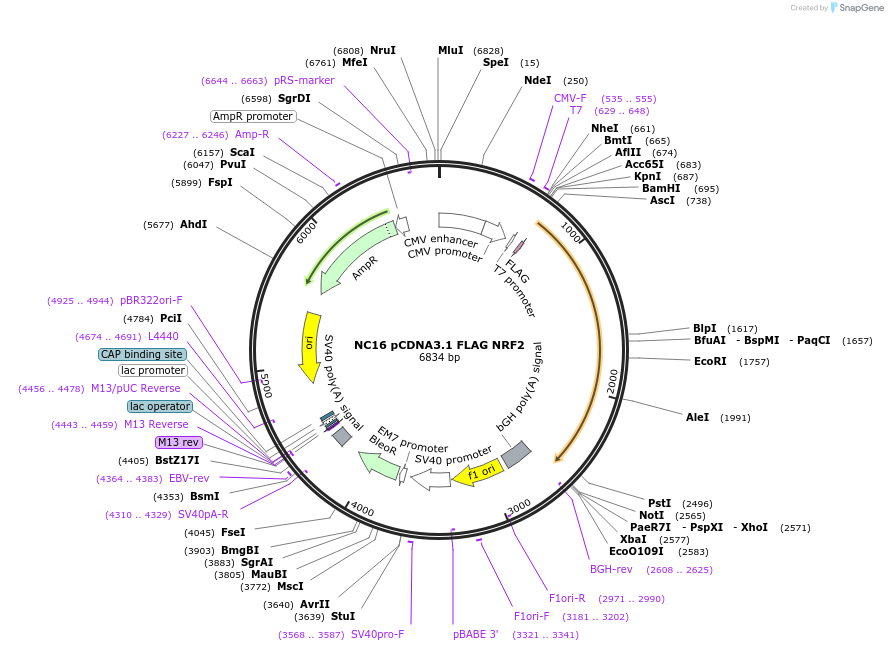-
Depositing Lab
-
Sequence Information
Ordering
| Item | Catalog # | Description | Quantity | Price (USD) | |
|---|---|---|---|---|---|
| Plasmid | 36971 | Standard format: Plasmid sent in bacteria as agar stab | 1 | $89 | |
Backbone
-
Vector backbonepcDNA3.1
-
Backbone manufacturerInvitrogen
- Backbone size w/o insert (bp) 5400
-
Vector typeMammalian Expression
-
Selectable markersZeocin
Growth in Bacteria
-
Bacterial Resistance(s)Ampicillin, 100 μg/mL
-
Growth Temperature37°C
-
Growth Strain(s)DH5alpha
-
Copy numberHigh Copy
Gene/Insert
-
Gene/Insert nameNRF2
-
SpeciesH. sapiens (human)
-
Insert Size (bp)1815
-
Entrez GeneNFE2L2 (a.k.a. HEBP1, IMDDHH, NRF2, Nrf-2)
- Promoter CMV
-
Tag
/ Fusion Protein
- Flag (N terminal on backbone)
Cloning Information
- Cloning method Restriction Enzyme
- 5′ cloning site AscI (not destroyed)
- 3′ cloning site NotI (not destroyed)
- 5′ sequencing primer CMV-F
- 3′ sequencing primer BGH rev
- (Common Sequencing Primers)
Resource Information
-
Articles Citing this Plasmid
Terms and Licenses
-
Academic/Nonprofit Terms
-
Industry Terms
- Not Available to Industry
Trademarks:
- Zeocin® is an InvivoGen trademark.
These plasmids were created by your colleagues. Please acknowledge the Principal Investigator, cite the article in which the plasmids were described, and include Addgene in the Materials and Methods of your future publications.
-
For your Materials & Methods section:
NC16 pCDNA3.1 FLAG NRF2 was a gift from Randall Moon (Addgene plasmid # 36971 ; http://n2t.net/addgene:36971 ; RRID:Addgene_36971) -
For your References section:
Wilms tumor gene on X chromosome (WTX) inhibits degradation of NRF2 protein through competitive binding to KEAP1 protein. Camp ND, James RG, Dawson DW, Yan F, Davison JM, Houck SA, Tang X, Zheng N, Major MB, Moon RT. J Biol Chem. 2012 Feb 24;287(9):6539-50. Epub 2012 Jan 3. 10.1074/jbc.M111.316471 PubMed 22215675



